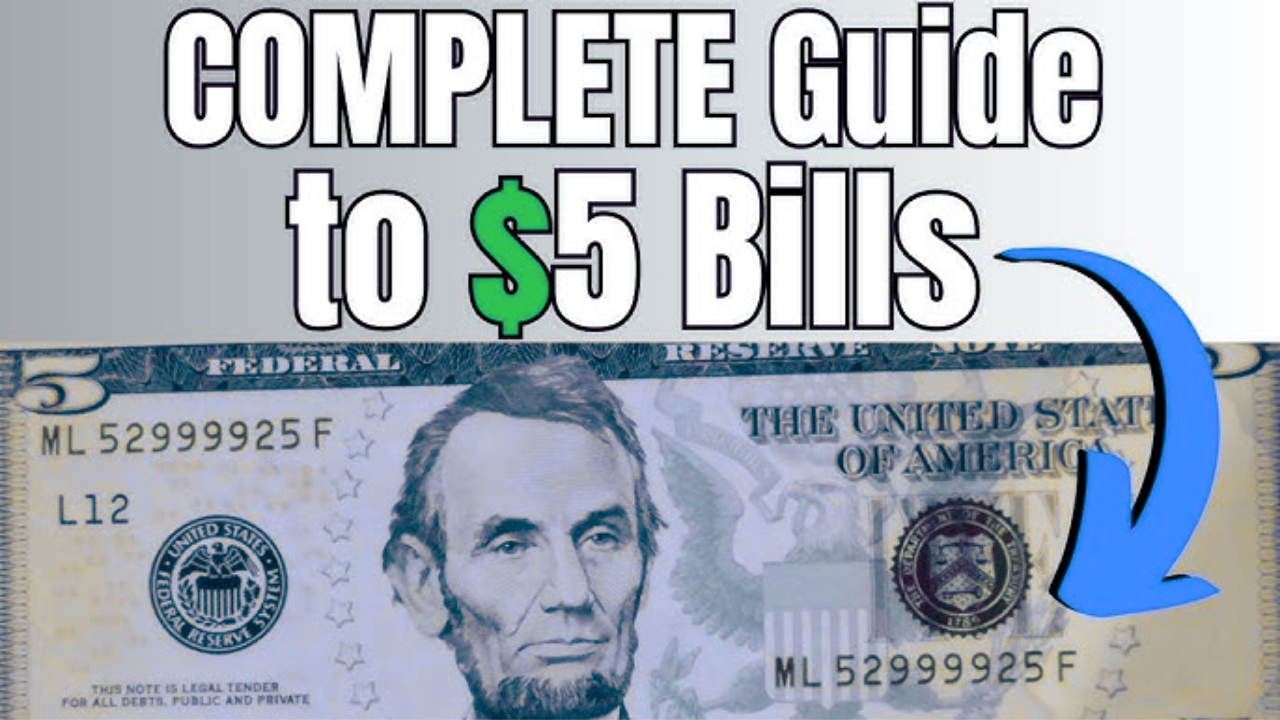A Hidden Treasure in Your Wallet
Ever thought that crumpled $5 bill in your pocket could be worth way more than five bucks? Back in 1995, a small printing mistake made some $5 bills super rare and valuable. The mistake is an upside-down Treasury seal, and collectors are crazy about these bills. They can sell for hundreds or even thousands of dollars, depending on their condition. This article will show you how to spot one of these special bills and why they’re such a big deal.
What Makes It Special
In 1995, the U.S. printed tons of $5 bills, but a few slipped through with a goof. The green Treasury seal, which is usually upright on the right side of Abraham Lincoln’s portrait, got printed upside down on some. This error makes the bill stand out like a sore thumb once you know what to look for. It’s not just the seal; sometimes the serial numbers are off too, but the seal is the main clue. These mistakes are rare because the printing process is super strict, so finding one is like hitting the jackpot.
How to Spot the Upside-Down Seal
To check if you’ve got a winner, grab your $5 bill and look at the green seal to the right of Lincoln’s face. On a normal bill, the seal is upright, with the words “United States Treasury” reading the right way up. On the rare error bill, the seal is flipped, so the text looks upside down compared to the rest of the bill. Hold it up to the light or tilt it to make sure. Also, check the year printed on the bill; it should say 1995. The serial numbers might be upside down too, but the seal is the key thing to check.
| Identification Step | What to Look For |
|---|---|
| Year | Must be 1995 |
| Treasury Seal | Green, upside down |
| Serial Numbers | May also be inverted |
Why Collectors Love It
Collectors go wild for these bills because they’re so rare. Printing errors don’t happen often, and when they do, they make the bill unique. A 1995 $5 bill with an upside-down seal in okay shape might sell for $100 to $200. If it’s crisp, like it just came off the press, it could go for $500 or more. Some super clean ones have even sold for $2,000 to $10,000 at auctions. The better the condition, no folds or tears, the more it’s worth. It’s like finding a rare coin, but in paper form.
| Condition | Estimated Value |
|---|---|
| Circulated | $100-$200 |
| Uncirculated | $500-$10,000 |
Where to Find These Bills
These rare bills could be anywhere, hiding in wallets, cash registers, or old drawers. They were printed in 1995, so older stashes of cash are your best bet. Check places like flea markets, garage sales, or even your grandma’s old purse. Banks might have them in their vaults too, but you’d have to ask. The trick is to keep your eyes peeled when you’re handling cash. Every $5 bill from 1995 is worth a quick look, just in case.
What to Do If You Find One
Found one? Awesome! First, keep it safe in a plastic sleeve to avoid damage. Don’t fold or bend it; collectors want them in top shape. You can take it to a currency dealer or auction house to get it checked out. They’ll tell you how much it’s worth based on its condition. You could also sell it online, but be careful to use trusted sites. Getting it graded by a pro service, like PCGS, can boost its value by proving it’s real.
A Fun Hunt for Everyone
Checking your cash for a 1995 $5 bill with an upside-down seal is like a mini treasure hunt. It’s easy to do and could turn pocket change into serious money. Next time you’re paying for coffee or digging through your wallet, take a second to look. You never know, that old $5 bill might just be a collector’s dream waiting to be found.
